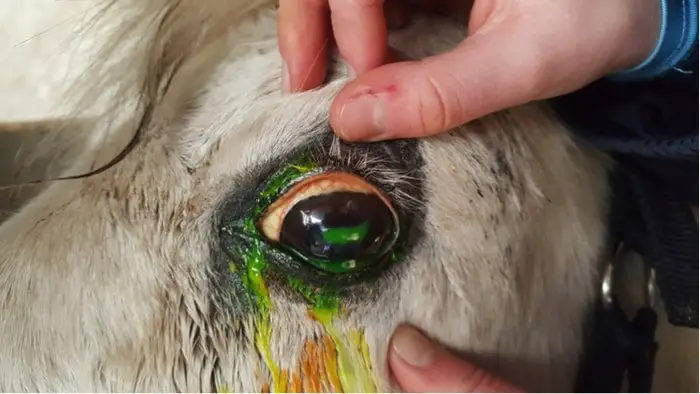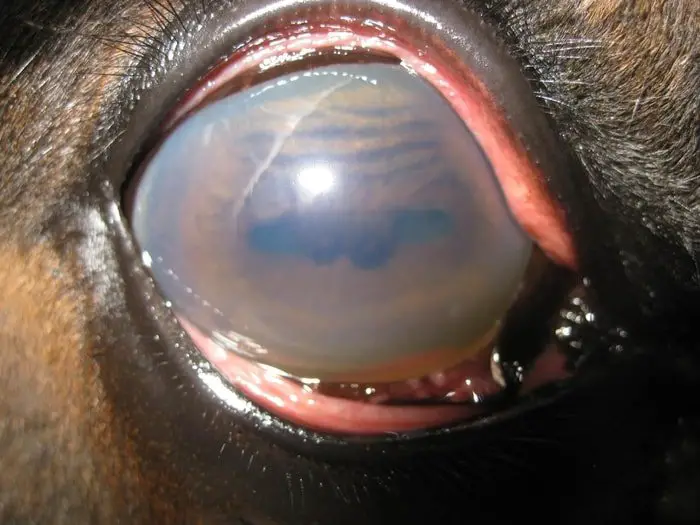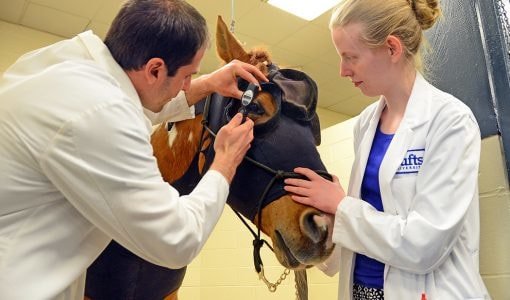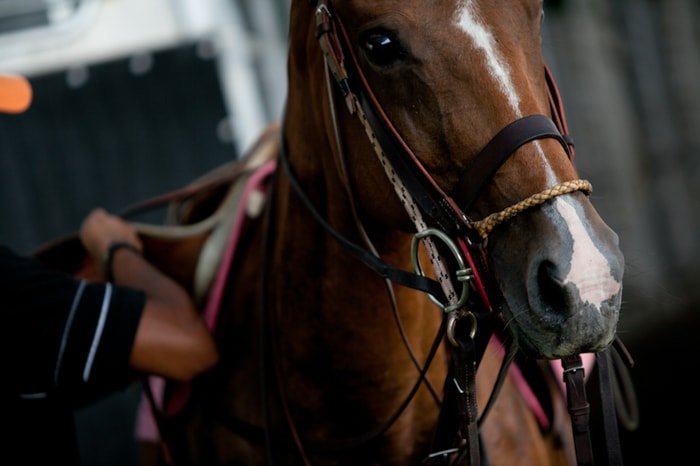Uveitis in horses or intraocular inflammation is a leading cause of blindness in horses. Uveitis may be acute or frequently recurrent. In horses subjected to recurrent uveitis, the uveal response may be exaggerated or maybe lacking in the suppression of T cells. Therefore, local derangement in immunoregulation may be a determining factor in the development of equine recurrent uveitis.
What Causes Uveitis in Horses?
Many causes have been implicated in acute cases, including Bacteria ( Leptospira spp, Brucella spp, Streptococcus equi), viruses ( Parainfluenza-3, influenza, Equine viral arteritis), fungi ( Chlamydia, Mycoplasma), Parasites ( Oncocerca cervicalis, Microfilerai, Strongylus, Toxoplasma gondi), hypersensitivity reactions, phacoanaphylaxis, endotoxemia or neoplasia. In the case of ocular trauma or endotoxemia or septicemia, the uveitis may be due to breakdown of the blood-eye barriers without a specific ocular immune response occurring.

What are the Clinical Signs of Uveitis in Horses?
Active uveitis may show signs of ocular pain, such as blepharospasm, photophobia, epiphora, and depression. Decreased vision may or may not be evident. Low-grade uveitis may show only ocular hypotony and aqueous flare. Most cases of uveitis will show some degree of conjunctival hyperemia.
Posterior uveitis may be manifested as chorioretinitis, often seen as cellular infiltration or edema adjacent to the optic nerve. The vitreous may appear cloudy due to inflammatory cells and proteins.
Equine recurrent uveitis includes cataracts, which may be focal or generalized, lens luxation, and persistent corneal edema. Chorioretinal scaring is also seen, and the typical butterfly lesion of depigmentation and atrophy medial and lateral to the optic disc is generally considered a sign of equine recurrent uveitis.

Diagnosis of Uveitis in Horses
Although a morphologic diagnosis of uveitis may be easy to make based on clinical signs, it is often difficult to ascertain the causes. Fluorescein should be applied to the cornea to rule out ulceration. Systemic involvement includes physical examination, CBC, and serum chemistry panel. Tests for a specific causal agent such as conjunctival biopsies for onchocerciasis and serology for viral or bacterial agents must be interpreted with care or positive serology titers.

Treatment of Uveitis in Horses
Uveitis should be treated with anti-inflammatory agents and mydriatics/cycloplegics for symptomatic therapy. Initial therapy should be aggressive and reduced as clinical signs subside. In the absence of corneal ulcers, topical corticosteroids are extremely useful. Subconjunctival corticosteroids are useful to supplement topical therapy. A systemic corticosteroid may also be beneficial. Dexamethasone may be used at a dose up to 20mg/500 kg twice daily. NSAIDs are also very useful. Atropine is the mydriatic/cycloplegic of choice.

Equine Uveitis Control
In the horse, as in other species, iridocyclitis is a usual and expected sequel to ulcerative keratitis. Topically applied anticholinergics, such as 1-2% atropine, may be useful in stabilizing the blood-aqueous barrier through pupillary dilatation effect. Pupillary dilation protects the visual axis from occlusion and may minimize synechiae development.
Final Advice on Uveitis in Horse
Though uveitis is very uncommon, it is the main cause of blindness in horses. Adequate care and protection are necessary to prevent disease conditions. There are a number of causes of uveitis in horses. The knowledge of the causal agent will help you to take preventive measures. I think this short article will help you to understand better than previous.